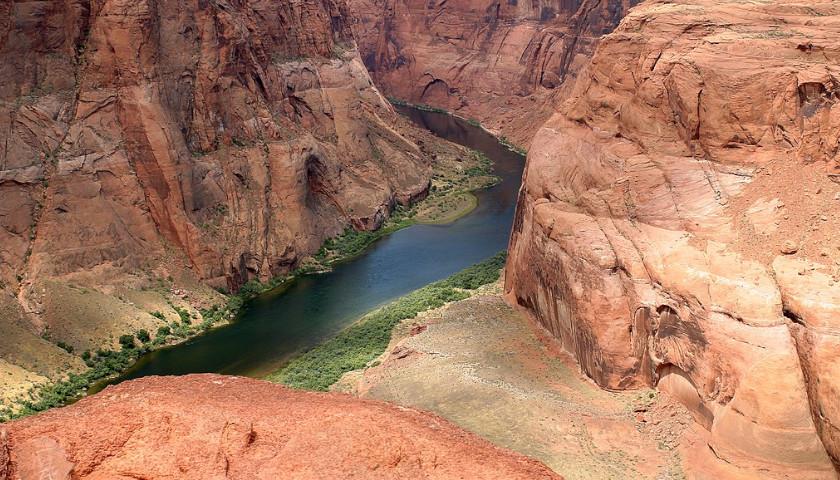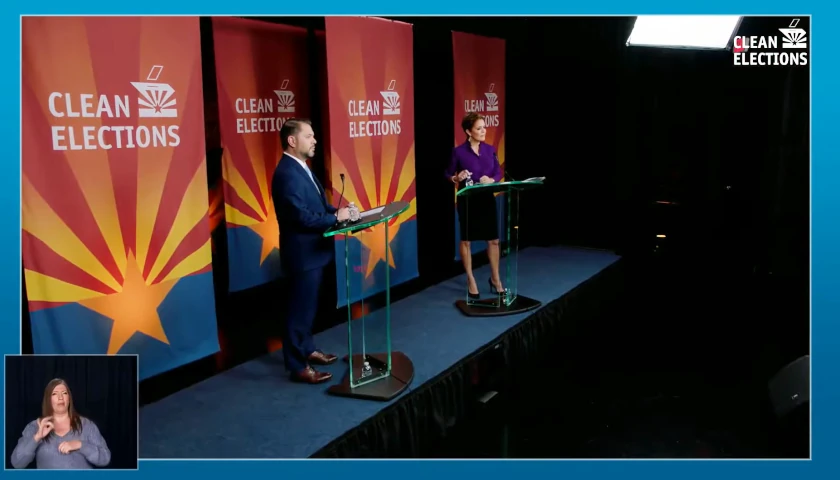As concerns grow that Arizona and neighboring states may be facing a water shortage due to one of the worst droughts in history, solutions are being proposed in the Arizona Legislature and by water experts.
The Goldwater Institute issued a report on March 15 in conjunction with the Environment Research Center (PERC), outlining reforms in four specific policy areas to deal with the problem. The report asserts that these proposals would not “require a dramatic expansion of the role of government.”
Bryan Leonard, a faculty affiliate in the Economics Department and the Center for Behavior, Institutions, and the Environment at Arizona State University, and Tate Watkins, a research fellow and managing editor at PERC, conducted the study. Leonard told The Arizona Sun Times, “As Arizona plans for a hotter and drier future, there is more work to be done to secure water supplies and promote sustainable management. Making sensible reforms now can help ensure that all Arizonans have a reliable supply of water well into the future, even as our population continues to grow.”
The report points out that Arizona “arguably leads the nation in water conservation efforts.” Unlike California, Arizona “established a system to manage groundwater pumping in fast-growing areas decades before neighbors such as California.” As a result of its conservation work, “In 2017, water use statewide was less than it had been 60 years earlier, despite the fact the population grew seven-fold over the same period.” The state has saved 3 trillion gallons of water in underground aquifers, enough to supply Phoenix for three decades.
While Arizona gets its water from multiple sources, including in-state surface waters, allocations from the Colorado River, groundwater, and reclaimed water, it must share water from the Colorado River with other states. Arizona has junior rights to water from the Colorado River, “which means that it is disproportionately impacted by cuts to water supplies.”
The Arizona Legislature allocated $1 billion last year to address the problem, but the state has not yet decided how it will be spent. The report said the ideas floated by the legislature — increasing the reuse of water, importing water from eastern states, and building or funding desalination plants — will not provide enough water.
The report advises setting up water markets, “allowing water rights to be voluntarily traded among competing users,” which “rewards conservation, motivates efficient use, and encourages cooperation instead of conflict.”
The first policy recommendation is to remove legal barriers to implementing this. The report said that water rights should be clarified better to make this possible, since the current “general stream adjudication” system creates “uncertainty around water claims,” where those claims are gradually adjudicated in court. Two of these claims have been ongoing in the courts for decades, the Litter Colorado River and Gila River watersheds. The report lays out a plan to speed up these types of proceedings.
To implement this, the report said to “establish a state water trust to facilitate market trading and lower transaction costs.” The report notes that Washington has already successfully implemented this, “which helps match buyers and sellers and allows for acquisitions of rights for preserving instream flows and similar purposes.”
Another suggestion is to “empower farmers to engage in beneficial water transfers, even outside of irrigation districts.” To do this, the report recommends limiting irrigation districts’ ability to block common-sense water trades. Irrigation districts would instead have the burden to show a proposed trade “would harm another user’s rights.”
The study proposes using “reverse auctions to limit economic distortion and maximize conservation opportunities.” The U.S. Department of Agriculture and conservation groups already utilize these. Farmers and irrigation districts could submit bids proposing water conservation measures and how much they would accept to take those measures.
“The state could then select the winning bidders — those that yield the most water conservation at the lowest price,” the report said, allowing the state to direct the water where it’s most needed.
The second reform proposed by the study would “clarify rights to groundwater and innovatively use markets to ensure the sustainability of groundwater basins.” Approximately 80 percent of the state’s population is covered by Active Management Areas (AMAs), which strictly regulate water usage, but 20 percent of the state in rural areas are outside of AMAs, and suffer from “unsustainable rates of pumping.”
The study suggests ending “open-access to groundwater and establishing tradable rights to it” by allowing those in rural areas to set up AMAs. Groundwater monitoring devices should be set up, and finish adjudicating water rights with surface water rights in local groundwater aquifers.
Third, the report agrees with implementing many of the ideas that have come out of the legislature, including reuse, desalination, and importation. The City of Scottsdale utilizes direct potable use of wastewater, but environmental regulations generally prohibit the rest of the state from using that. Arizona could assist California with releasing its treated wastewater into the ocean, in exchange for some of California’s Colorado River supply.
Finally, the report recommends, “Support voluntary water conservation in urban areas.” Unlike Los Angeles and Las Vegas, Phoenix, and Tucson do not offer incentives for conservation. Those other cities “have incentive-based programs that pay residents to replace their grass yards with less thirsty ‘xeric’ plants that often consist of local desert flora.”
– – –
Rachel Alexander is a reporter at The Arizona Sun Times and The Star News Network. Follow Rachel on Twitter. Email tips to [email protected].
Photo “Colorado River” by Adrille. CC BY-SA 3.0.





